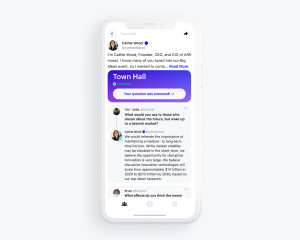Customers switch vendors all the time. No matter how long a business relationship has lasted, there are always issues that crop up that will demand its termination. While some issues may be resolved amicably, others may not. Regardless of how each of your business relationships turn out, there is no reason to burn your bridges with your vendor or partner.
An Ex-Customer Is Still Valuable
Besides paying for your product or services, customers also play a very important role in word of mouth referrals. So while you may not be monetizing a customer who no longer does business with you, they may still play a critical role in influencing opinions of new prospects who are looking to buy from you. By treating your ex-customers with honor and respect, you are likely to retain their goodwill which goes a long way in bringing new customers to your business.
Ex-Customers Can Always Return
There are several reasons why a customer chooses to end a partnership. A customer may no longer have a need for your product or service. Other times, they may be lured by cheaper quotes from your competitors. None of these indicate a permanent departure and it is always a chance for them to come back. By keeping your door open to these ex-customers and not burning bridges, you keep the option of their return open.
So how do you not burn your bridges with a customer? A lot of times, businesses fail to realize that the bridge is being burnt through the process of business termination.
Make The Termination Process Simple
Make your termination process as simple as your sign up process is. For instance, if you have a sales person drive down to your customer’s office to complete formalities during the sign up process, make sure you have an employee do the same for termination as well. Many businesses bend over backwards during customer onboarding but fail to do this during termination. This leaves the customer frustrated and unlikely to return.
Resolve Differences Amicably
Differences over issues like pricing are generally resolved amicably. But what happens when larger issues crop up? Many times, customers may breach the terms of your contract even without realizing it. In such cases, do not be quick to engage lawyers. Instead, try to resolve these differences amicably by engaging with your customers and trying to understand their perspective. There are of course times when litigation is inevitable. But let that always be the last resort when dealing with a customer. The issue here is not just with one particular customer. Instead, how you treat a customer in such instances is also a case study for your other customers and prospective new buyers. Do not let your dealing with one customer impact your relationship with the rest of your clientele.
Firing A Client Politely
There are times when you may be required to fire a client either because they are difficult to work with, or they want you to do something unethical. While the instinctual reaction is to call them out on their actions, a better way to do this is by terminating the contract without directly blaming anyone. Go by the books and provide them a reasonable notice period so that they are not at a loss because of the sudden termination. The best way to fire a client without burning bridges however is by explicitly keeping the door open by ending your email with something non-commital as ‘hope we cross paths again in future’. This provides an opportunity for the client to come back to you in future should your pending differences be resolved by then.
Business & Finance Articles on Business 2 Community(101)





